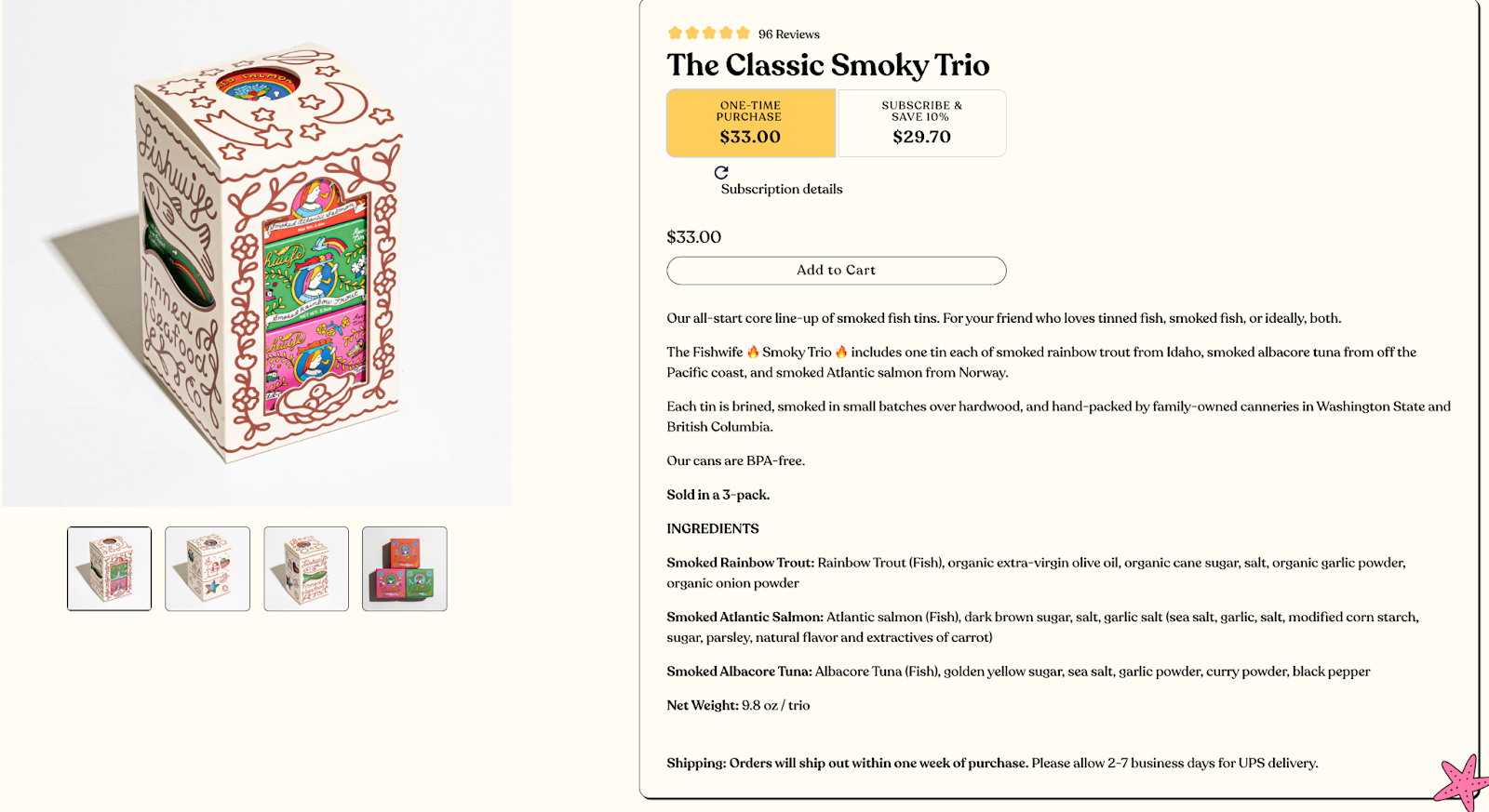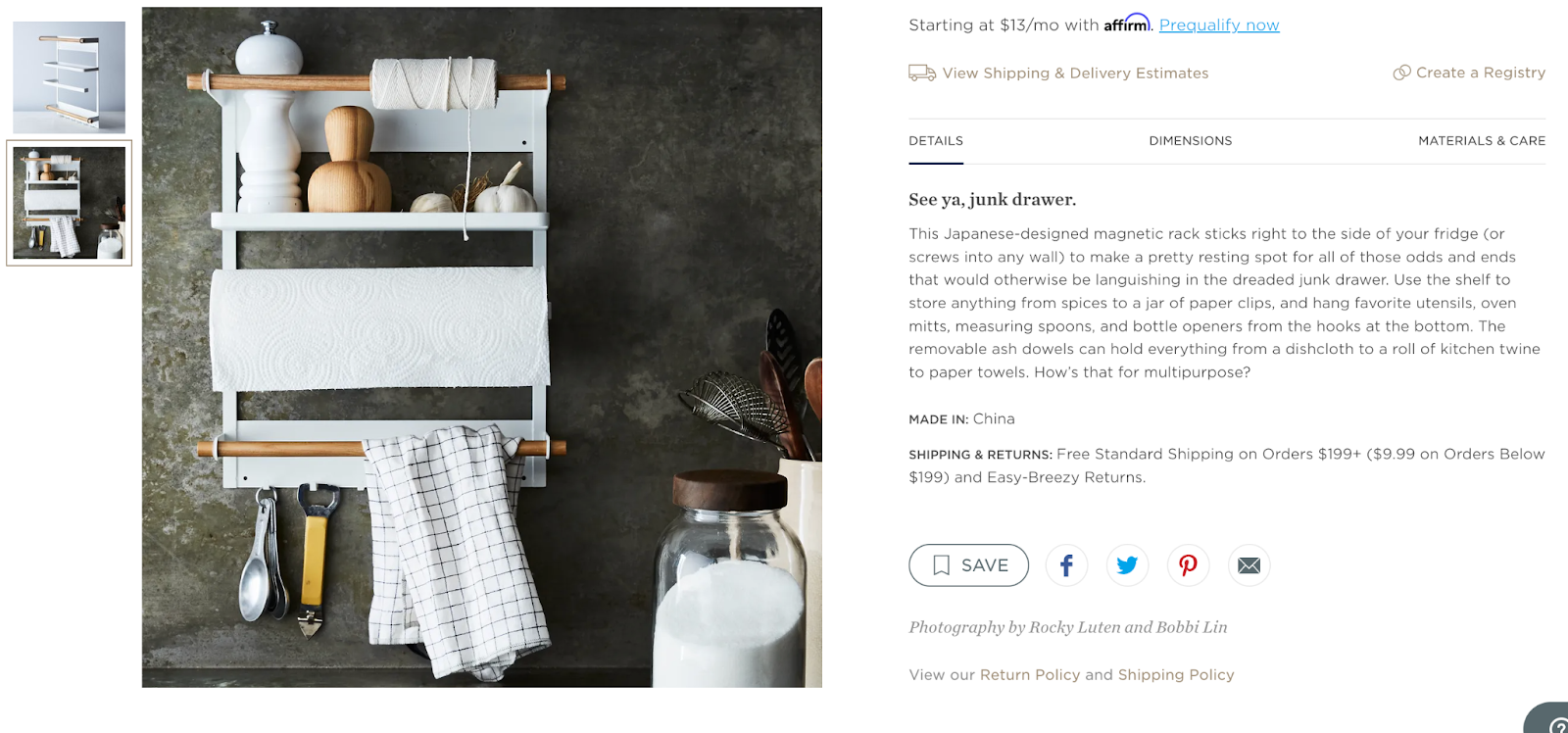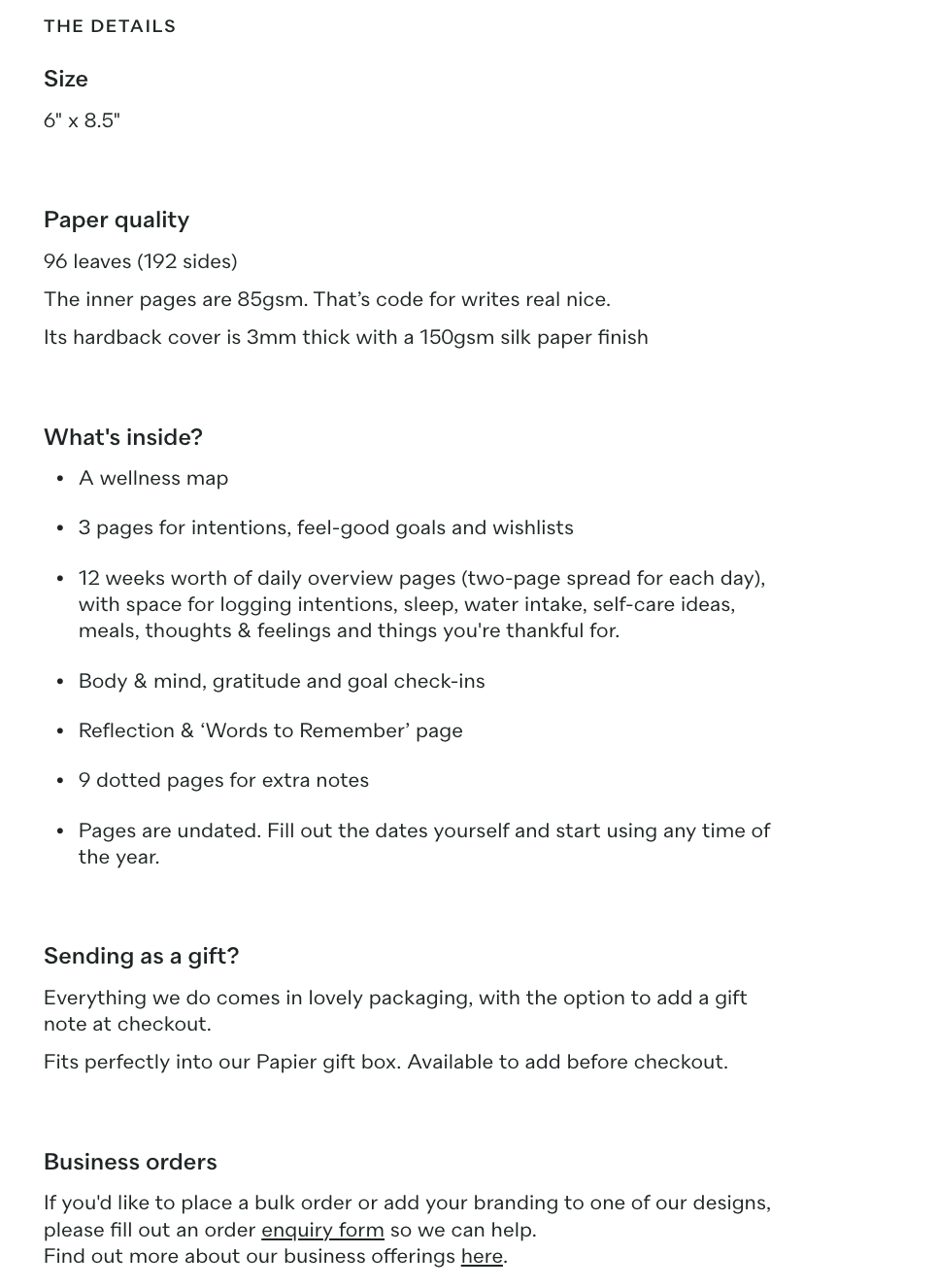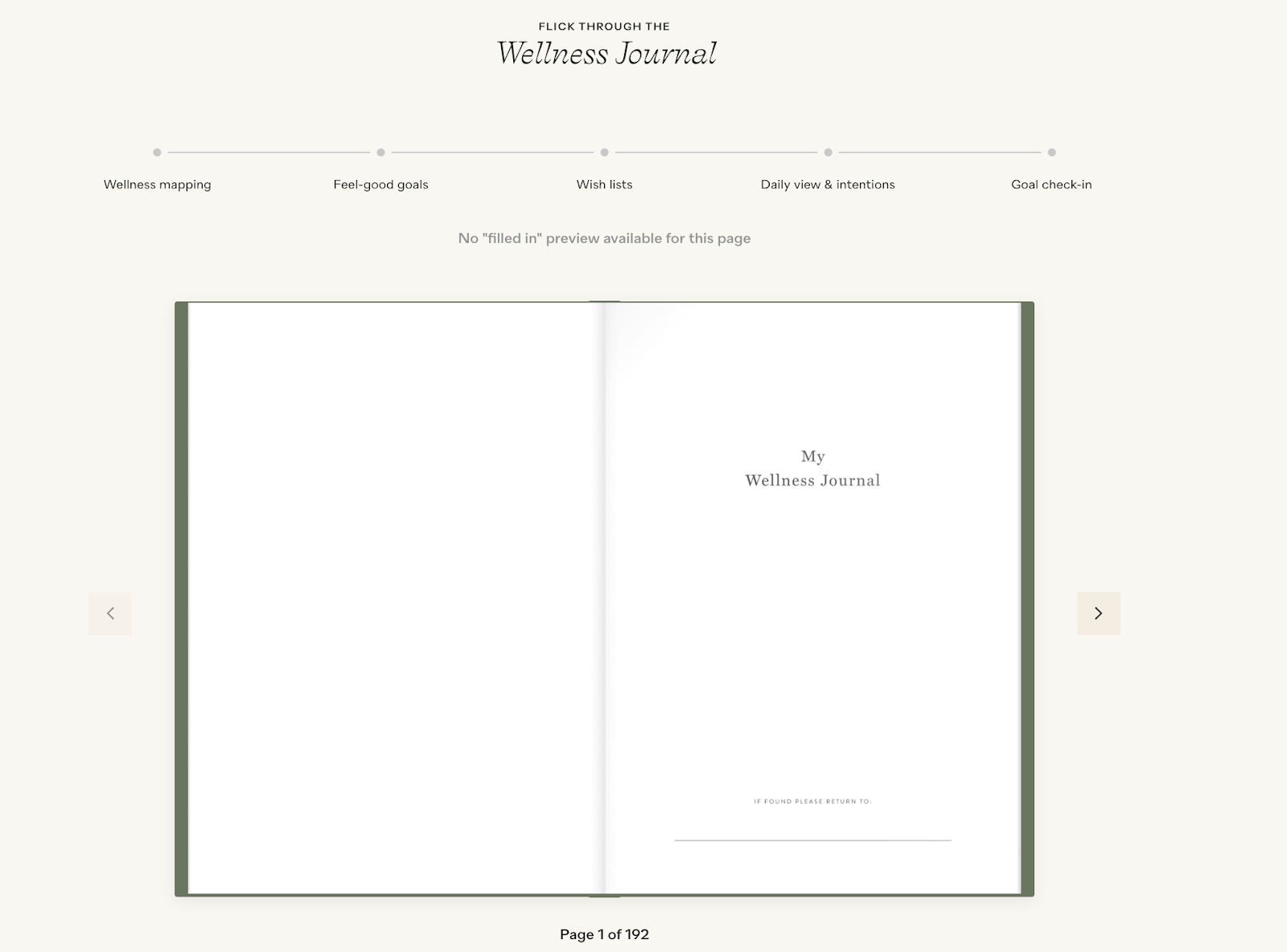A good product description will draw shoppers in, but an excellent product description will convert them to purchase.
Salsify’s guide, “Why Bad Product Content Is Killing Your Brand,” notes that "the product page is the new packaging.” Essentially, your product page should be doing the marketing footwork for your product.
In fact, a staggering number of global shoppers rely heavily on product descriptions when shopping online. Sixty-two percent of German shoppers, 65% of Australian shoppers, 67% of French shoppers, 68% of shoppers in Great Britain, and 72% of U.S. shoppers surveyed in Salsify’s “2023 Shopper Research” — which provides an interactive country-by-country breakdown — base their purchase decisions on the quality of the product description.
Conveying products accurately and creatively through text is challenging, but learning how to write product descriptions that capture your audience's attention (and loyalty) is within your reach.
How To Write Product Descriptions
A product description is explanatory marketing copy that provides consumers with an understanding of what a product is and how it will meet their needs. It includes information such as product dimensions, material, cleaning instructions, and weight.
Your product descriptions are excellent opportunities to showcase your brand’s personality, values, and customer service to your target audience. You can do so with content that provides a perfect mix of:
8 Questions To Ask While Writing Product Descriptions
When considering how to write product descriptions, ask yourself the following eight questions to guide your writing process:
1. What Are the Key Features That I Want To Emphasize?
When consumers view your product page, they want to quickly find the product highlights. Make sure you prominently display important product features in easily scannable ways. Using bullet points is a great way to achieve this.
Consider your industry when writing these bullet points. A furniture company, for example, could include information on material type and dimensions, while a food company could include nutrition and ingredients.
2. How Does This Product Improve Customers’ Lives?
Consumers are overwhelmed with a wealth of options, and they’re turning to your brand in search of solutions. You need to anticipate their needs before they do and convince them that your product will enhance their lives.
3. Is Your Content Clear and Thoughtful?
If a consumer is confused by your product description or can’t find the information they need, they’ll turn elsewhere. If they consistently find what they’re looking for, on the other hand, you’ll gain their trust and loyalty.
4. Is Your Product Description Aspirational?
Using aspirational descriptions gives customers a better understanding of how the product will add to their lives (or at least make their lives easier). If you’re selling fitness equipment, for example, write about how their sense of well-being will improve by using your products.
5. Are You Offering a Consistent Brand Story?
Writing copy that appeals to multiple audiences will cause you to lose your brand voice. You must know who your target audience is and what appeals to them. Otherwise, your descriptions will fall flat.
6. Are You Implementing an SEO Strategy?
No matter how engaging your product descriptions are, it won’t make a difference if your products are getting buried in search results. Establishing an ecommerce search engine optimization (SEO) strategy helps you gain critical market share and increase conversions and sales.
7. What Makes Bad Product Content?
Bad product descriptions mean certain death for your brand. If you’re lacking the necessary product info, or if your pages are out of date or inconsistent, shoppers will abandon their cart.
3 Examples of Product Descriptions By Industry
You can learn how to write the perfect copy for each industry by following excellent examples of product descriptions.
Delicious Food Product Descriptions
Consumers want to know that a product will taste good before they even take a bite. Include descriptive words that awaken consumers’ senses in your description.
Tinned fish brand Fishwife achieves this effortlessly by using words like “smoked” and “brined.” The brand also provides a full list of ingredients, net weight, and fish origin.

Image Source: Fishwife
The product descriptions are thorough and engaging, and customers know exactly what to expect from their first bite of tinned fish.
Useful Kitchen Gadget Descriptions
If you’re writing a product description for a kitchen gadget, you’ll want to convey the item’s usefulness and include information about its dimensions, materials, instructions, and more.
Food52 does an excellent job of using witty copy, while providing all the necessary product information.

Image Source: Food52
Product images should go hand-in-hand with the description, as lifestyle images are incredibly important for providing inspiration and showing consumers how to use the product.
The Perfect Planner Descriptions
Similar to food shoppers, bibliophiles rely heavily on the senses when purchasing products. Feel, scent, and appearance (despite the saying “don’t judge a book by its cover”) play a huge part in picking the right planner.
Your product description must offer the next best thing. Consumers are looking for information such as paper type, number of pages, and layout.
Papier is well known for its thoughtfully designed and curated planners.



Image Source: Papier
Papier successfully gives consumers a full picture of its products, using words like “lovely” to describe paper material, breaking down what’s inside, and providing a flip-through of the entire planner. Customers won’t have any surprises when receiving their purchase.
Win Customers Over With Excellent Product Copy
Product descriptions offer the perfect opportunity to show a little personality. You want to draw customers in with beautiful product imagery, and then convince them that they can’t live without your product.
When done right, you’ll drive sales and convert shoppers into loyal customers who believe in your brand and will purchase from you again.


.svg)